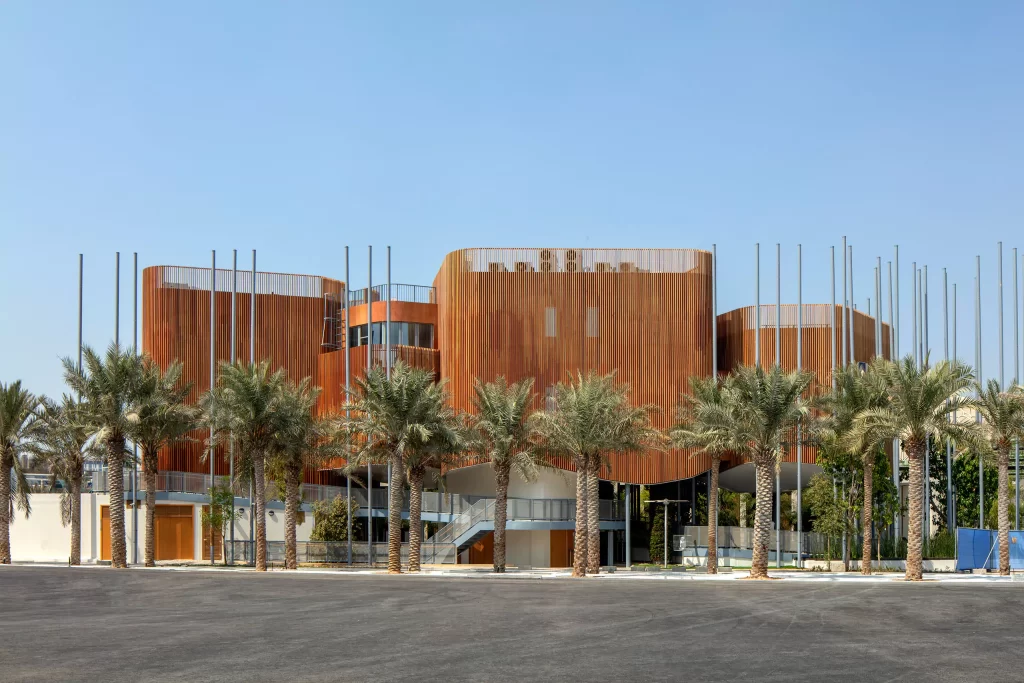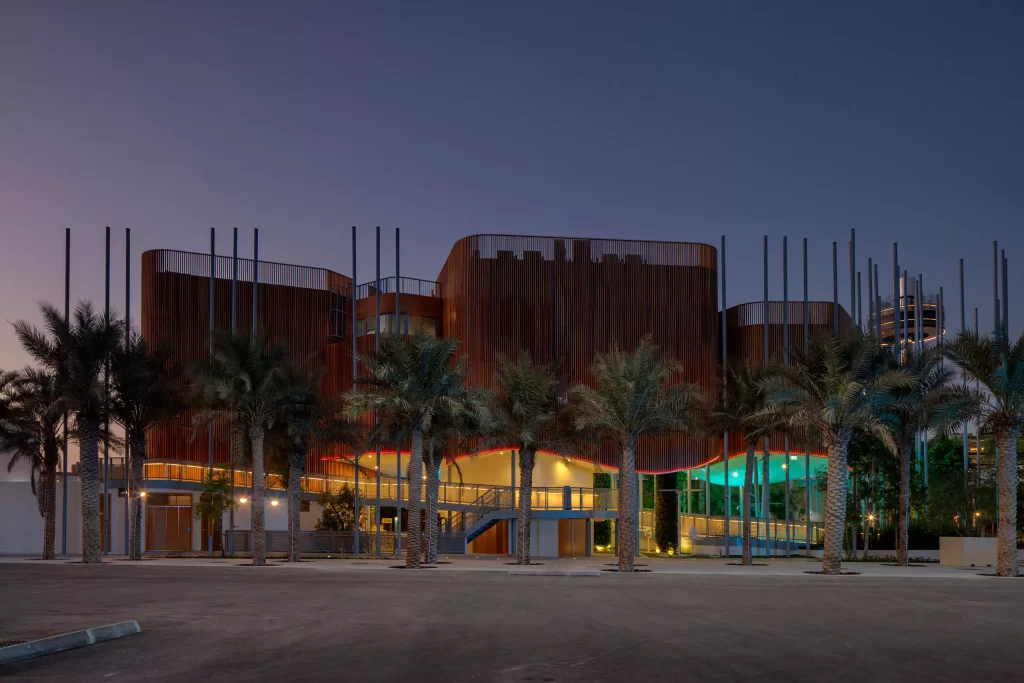The design of the Malaysia Pavilion for Expo 2020 Dubai symbolises the synergistic relationship between man and nature. We believe that the expansion of human civilisation should not alienate the natural habitat, but instead strive to integrate into it. Nature-based solutions — biomass from agriculture, harnessing of hydro energy — are to be adopted sustainably.
Malaysia Pavilion
Expo 2020
Energising
Sustainability

Like a rainforest canopy, the pavilion lightly touches the ground, its forms borne on slender trunks.
The three curvilinear forms touch the earth at as few points as possible — inferring the canopies of Malaysian tropical rainforests — surrounded by groves of allegorical tree-columns that represent the scramble for sunlight in a vibrant jungle environment.


The pathway guides visitors on a journey through a water pool, vertical gardens, water rills, and sunken gardens designed to bring natural light to the pavilion’s understorey deck.
Contained within the pavilion are exhibition halls supported by cafeteria, retail and amphitheatre as well as a multifunction hall and other meeting facilities housed within an understorey business level. The pathway is an integral part of the rainforest narrative.



This segment treats visitors to a captivating experience of why Malaysia is the 12th mega biodiverse country in the world with its rich flora and fauna.


As visitors enter the pavilion, they will be transported to a Malaysian rainforest setting. This segment also showcases Malaysia’s Sustainable Agricommodities which is closely linked to land-use management policies, a sector significant in the country’s socio-economic growth. From sustainable agrocommodities to the PETRONAS LED cube, the pavilion’s many exhibits are engagements of tactile and visual experiences designed to fascinate and educate.

Standard marine ply panels and equal-sized timber battens were used to construct the façade, allowing for ease of construction without sacrificing the pavilion's unique aesthetics.
Efficient use of materials reduces energy output. This means finding building materials of lower embodied carbon that can be recycled when the pavilion is decommissioned. Steel members were standardised and optimised for modular construction wherever possible.

1st
net-zero building for Malaysia
1528 tCO2
Building life cycle carbon equivalent
75%
material deployment/recycle on decommissioning
25.7%
energy efficiency
85%
potable water reduction
65%
operational energy from renewable energy
10%
of building energy is powered by solar
Other Key Features
REDD+ carbon sequestering for last mile solutions
Building cladding is made of sustainably sourced Meranti Wood from Malaysia.
Steel structure can be recycled upon decommissioning
Base foundation is made of concrete with fly ash
Awards
2022 Ministry of Energy & Natural Resources Malaysia: Forest Conservation
Certificate: Net Zero Carbon Pavilion
2022 Bureau International des Expositions (BIE) Awards for Theme Interpretation: Sustainability, Mobility & Opportunity — Gold
2022 Global Design and Architecture Design Award (GADA) 2022 Sustainable Project of the Year – 1st Place
2022 APPIES (Asia Pacific) Gold
2022 Gulf Sustainability 2nd place
2022 Gold Award (Dragons of Malaysia)
2022 Gold Award (Dragons of Asia)



















